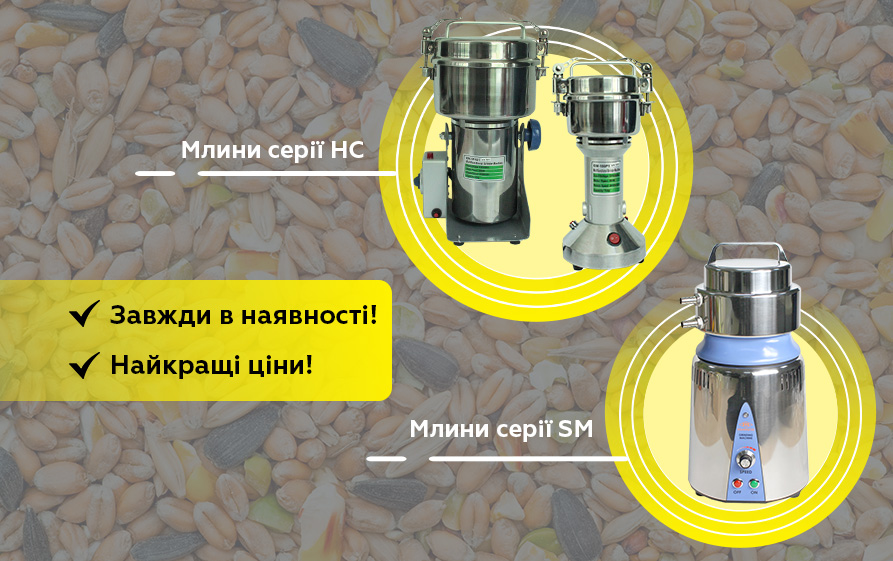Maximize Energy Efficiency with Closed Cell Foam Insulation
Closed cell foam insulation maximizes energy efficiency by delivering superior R-values of 6.0-7.0 per inch while creating an impermeable air and moisture barrier. This dense foam structure eliminates thermal bridging, air infiltration, and moisture intrusion that reduce building performance, achieving energy savings of 30-50% compared to traditional insulation methods.
The closed cellular structure consists of completely sealed cells that trap inert gas, creating exceptional thermal resistance and structural strength. This dual-purpose material serves as both insulation and air barrier, simplifying building envelope design while maximizing thermal performance in a single application.
Superior Thermal Performance Characteristics
Closed cell foam delivers the highest R-value per inch among spray foam options, requiring less thickness to achieve target thermal performance. The material’s consistent density and cellular structure maintain thermal properties across temperature variations, ensuring stable energy performance throughout seasonal changes.
The foam’s low thermal conductivity stems from trapped gas within sealed cells, which conducts heat much slower than air-filled open cell alternatives. This characteristic allows thinner applications to meet building code requirements while maximizing usable space in wall cavities and attic areas.
Air sealing capabilities eliminate convective heat loss that reduces the effectiveness of traditional insulation materials. Studies show that air infiltration can account for 25-40% of heating and cooling energy loss, making closed cell foam’s air barrier properties crucial for maximum efficiency.
Bonus Tip: Closed cell foam’s R-value remains stable across temperature ranges, unlike some traditional materials that lose effectiveness in extreme conditions.

Technical Performance Specifications
| Property | Closed Cell Foam | Open Cell Foam | Fiberglass Batts |
| R-Value per inch | 6.0-7.0 | 3.5-4.0 | 3.1-3.4 |
| Density (lbs/ft³) | 1.7-2.0 | 0.4-0.5 | 0.5-1.0 |
| Air permeability | <0.02 L/s·m² | 2.3-5.8 L/s·m² | High |
| Water vapor permeance | 0.8-1.5 perms | 16+ perms | High |
| Compressive strength | 25-40 psi | 3.5-5.0 psi | Minimal |
| Dimensional stability | Excellent | Good | Poor |
Detailed Technical Data
| Specification | Value | Test Method |
| Thermal conductivity | 0.19-0.22 BTU·in/hr·ft²·°F | ASTM C518 |
| Flame spread index | 25 or less | ASTM E84 |
| Smoke developed index | 450 or less | ASTM E84 |
| Tensile strength | 40-60 psi | ASTM D1623 |
| Water absorption | <2% by volume | ASTM D2842 |
| Operating temperature | -100°F to 200°F | Manufacturer data |
| Service life | 50+ years | Field studies |
Energy Efficiency Mechanisms
Professional installation of Closed cell foam creates continuous thermal barriers that eliminate thermal bridges through framing members. Traditional insulation allows heat transfer through wood and metal studs, reducing overall wall system R-values by 15-25%. The foam’s adhesion properties seal these thermal bridges completely.
Moisture control capabilities prevent condensation within building assemblies that can reduce insulation effectiveness and create mold conditions. The material’s low vapor permeance stops moisture migration while maintaining structural integrity of building components.
Air sealing performance eliminates drafts and pressure differentials that force HVAC systems to work harder. The foam creates uniform pressure zones within buildings, reducing equipment cycling and maintaining consistent indoor temperatures with less energy input.
Application Areas for Maximum Efficiency
Exterior wall systems benefit most from closed cell foam’s high R-value and air sealing properties. The material fills irregular cavities completely while providing structural reinforcement that can increase wall strength by 200-300%.
Attic applications in extreme climate zones require closed cell foam’s superior thermal performance to meet energy codes with minimal thickness. The material’s moisture barrier properties also prevent ice dam formation in cold climates.
Below-grade applications utilize closed cell foam’s moisture resistance and structural properties to insulate foundation walls and basement areas. The material serves as both insulation and waterproofing membrane, eliminating multiple installation steps.
Installation Methods for Optimal Performance
Professional spray application ensures proper chemical mixing ratios and application techniques that maximize thermal performance. The material requires specific temperature and pressure conditions during installation to achieve specified density and cellular structure.
Thickness control maintains consistent R-values across application areas while preventing waste or inadequate coverage. Most applications require 2-4 inches of closed cell foam to meet building code thermal requirements.
Surface preparation removes contaminants and moisture that can interfere with adhesion and chemical curing. Clean, dry substrates ensure maximum bond strength and long-term performance stability.
Bonus Tip: Schedule installation during optimal weather conditions to ensure proper curing and maximum thermal performance characteristics.
Building Performance Integration
HVAC system sizing benefits from closed cell foam’s air sealing and thermal performance, often allowing 20-30% equipment downsizing. Reduced heating and cooling loads lower equipment costs and improve system efficiency throughout the building’s lifecycle.
Indoor air quality improves through controlled ventilation strategies enabled by tight building envelopes. Mechanical ventilation systems can operate more efficiently when air exchange occurs through designed pathways rather than random infiltration.
Structural performance enhancement occurs through closed cell foam’s adhesion to building components, which can eliminate need for additional bracing or structural elements in some applications.
Climate Zone Considerations
Cold climate applications maximize closed cell foam’s thermal performance advantages, where high R-values and moisture control prevent condensation and ice formation. The material’s low-temperature stability maintains performance in extreme conditions.
Hot climate installations benefit from the foam’s ability to prevent moisture intrusion and maintain consistent interior temperatures. Air conditioning loads decrease significantly when buildings achieve tight envelope performance.
Mixed climate zones require careful moisture management strategies that utilize closed cell foam’s vapor barrier properties appropriately. Proper building science principles ensure optimal performance across seasonal variations.
Things to Consider Before Making a Decision
Building code requirements vary significantly by region and application area. Verify local energy codes and fire safety requirements before selecting closed cell foam to ensure compliance and optimal performance integration.
Ventilation strategies need evaluation when using closed cell foam due to its excellent air sealing properties. Buildings may require mechanical ventilation to maintain indoor air quality and prevent moisture accumulation.
Installation timing affects foam performance and building schedule coordination. The material requires specific environmental conditions and cure times that may impact other construction activities.
Professional installation requirements ensure proper application techniques and safety procedures. Closed cell foam installation requires specialized equipment and training that affects contractor selection and project planning.
Common Questions
How does closed cell foam improve HVAC efficiency? Closed cell foam reduces HVAC workload by eliminating air infiltration and providing superior thermal barriers. Systems cycle less frequently and maintain set temperatures with reduced energy consumption, often achieving 30-50% efficiency improvements.
Can closed cell foam work in all building types? Closed cell foam performs well in residential, commercial, and industrial applications when properly designed for specific building requirements. The material adapts to various substrates and building configurations while maintaining consistent performance.
What maintenance does closed cell foam require? Closed cell foam requires minimal maintenance beyond periodic visual inspections to ensure the material remains intact. Professional assessment may be needed if building modifications or damage occurs near foam applications.
How does closed cell foam affect indoor air quality? Closed cell foam improves indoor air quality by controlling air infiltration and moisture intrusion. The material eliminates uncontrolled air exchange while allowing designed ventilation systems to operate more efficiently.

Maximize Energy Efficiency with Closed Cell Foam Insulation FAQ
Does closed cell foam provide better energy savings than other insulation types? Closed cell foam typically delivers 30-50% greater energy savings compared to traditional insulation methods through superior R-values and complete air sealing. The combined thermal and air barrier properties eliminate multiple energy loss mechanisms simultaneously.
What factors determine closed cell foam thickness requirements? Thickness requirements depend on target R-values, climate zone requirements, and building code specifications. Most applications require 2-4 inches to achieve code compliance, with specific calculations based on local energy requirements.
Can closed cell foam eliminate the need for separate air barriers? Closed cell foam serves as both insulation and air barrier, eliminating separate air sealing steps required with traditional materials. This integration simplifies construction while ensuring consistent air barrier performance.
How does closed cell foam performance change over time? Properly installed closed cell foam maintains its thermal and air sealing properties for 50+ years without significant degradation. The material’s closed cellular structure prevents settling and moisture absorption that affect other insulation types.
What building envelope improvements work best with closed cell foam? Closed cell foam works optimally when integrated with high-performance windows, doors, and mechanical ventilation systems. This comprehensive approach maximizes energy efficiency while maintaining indoor comfort and air quality.
Make the Right Decision
Closed cell foam insulation maximizes energy efficiency through superior thermal performance, complete air sealing, and moisture control in a single application. The material’s high R-value and structural properties create building envelopes that significantly reduce heating and cooling energy requirements.
Evaluate your climate zone, building type, and performance goals to determine if closed cell foam aligns with your energy efficiency objectives. Consider factors like building codes, ventilation requirements, and long-term performance expectations when planning your insulation strategy.
Work with experienced spray foam insulation services who understand closed cell foam installation techniques and building science principles. Proper application ensures maximum energy efficiency benefits and long-term performance that justifies the material investment through reduced operating costs.
Author and Reviewer:
Author: Jeremy Fields brings over a decade of experience in construction and business to Ozark Eco Foam. With a background in both residential and commercial projects, he focuses on completing each insulation job with accuracy and attention to detail. Ozark Eco Foam reflects his commitment to quality work and practical solutions built on years of hands-on industry knowledge.
Reviewer: Amelia Young contributed insights from 10 years in spray foam insulation. Her review helped sharpen the article’s focus on customer engagement and clear service messaging.













